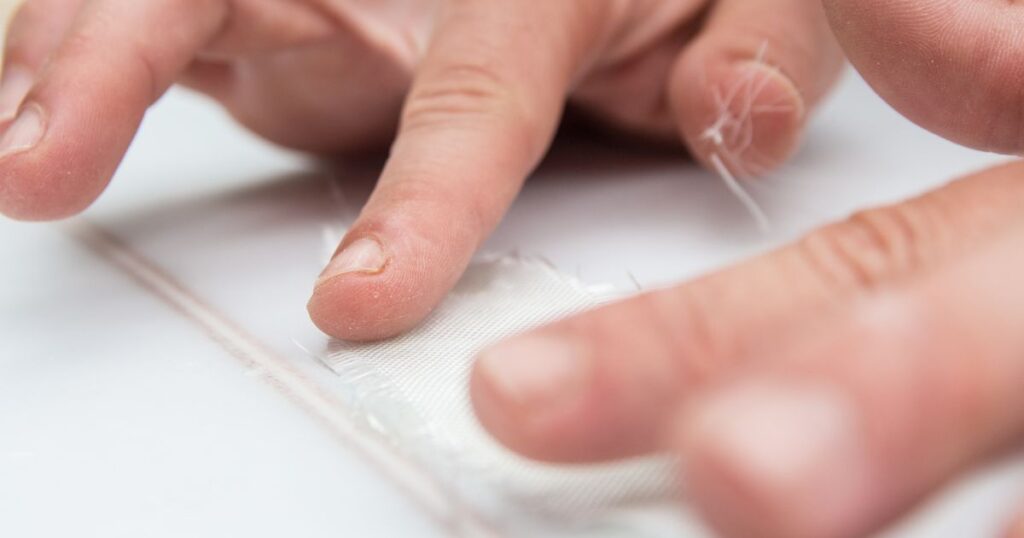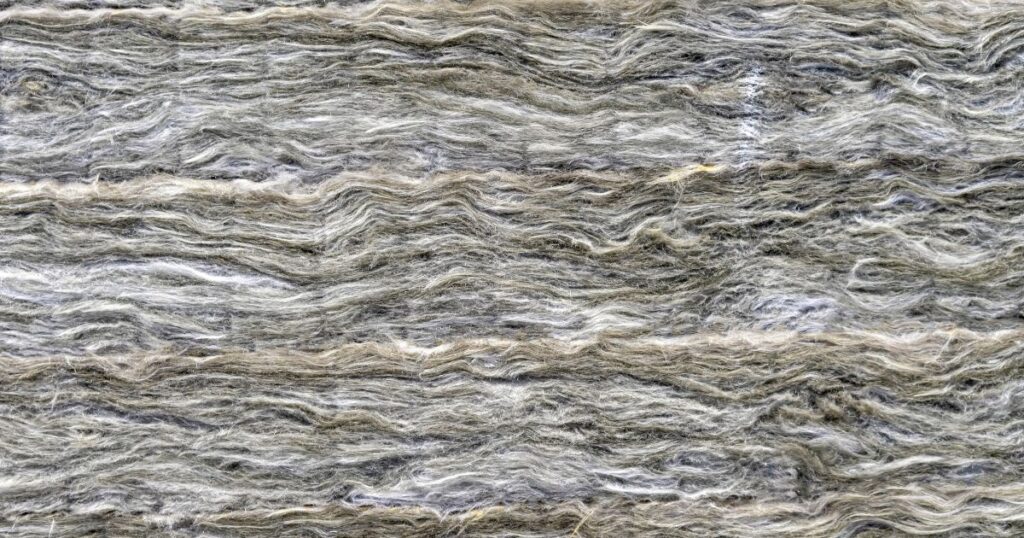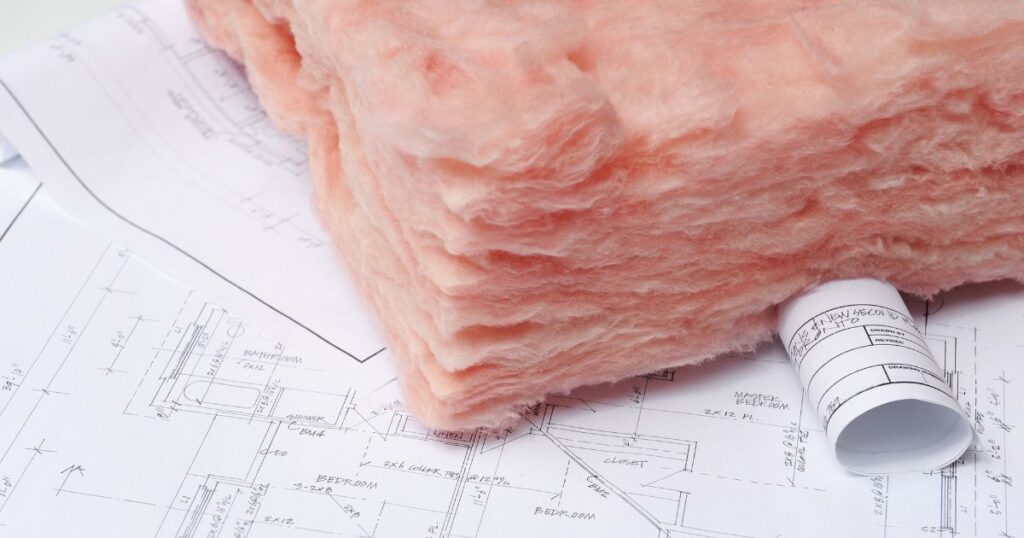What is Fiberglass?
Fiberglass is a versatile and durable material that is widely used in construction and manufacturing. Made from tiny woven glass fibers, this composite material is known for its strength, lightweight nature, and resistance to corrosion and heat. It is often used to reinforce plastics and other materials, making it a popular choice for items such as boats, automotive parts, and insulation. Additionally, fiberglass is also used in the construction of buildings and infrastructure, as it provides an excellent alternative to traditional materials like wood and steel. With its wide range of applications and benefits, fiberglass continues to be a valuable and essential material in various industries.
Why Is It Important to Remove Fiberglass insulation from Skin?
It is crucial to remove fiberglass from the skin as soon as possible, as the tiny fibers can cause skin irritation and discomfort. If left untreated, there are several risk of Fiberglass exposure: these fibers of glass can also penetrate the skin and cause further irritated skin or infection. Prompt action is necessary to minimize the discomfort and prevent any potential health risks associated with fiberglass exposure.
To remove fiberglass from the skin, it is recommended to wash the affected area with warm water and mild soap to help dislodge the fibers. Gently pat the skin dry and then use tape to extract any remaining fibers from the skin. It is important to avoid rubbing the skin vigorously, as this can further irritate the area.
In addition to skin removal, it is also important to remove fiberglass from clothing to prevent re-exposure. The affected clothing should be washed separately with warm water and mild soap, and a lint roller or tape can be used to remove any remaining fibers.
Overall, taking swift action to remove fiberglass from the skin and clothing is essential to minimize discomfort, prevent further irritation, and reduce the risk of potential health issues associated with fiberglass exposure.

Steps to get fiberglass out of skin:
- Assess the situation: Determine the extent of fiberglass exposure and any visible signs such as itching, redness, or irritation.
- Protect yourself: Put on gloves, safety goggles, and a long-sleeved shirt to prevent further contact and protect your skin.
- Rinse with water: Immediately flush the affected area with cool water to remove any loose fiberglass particles on the skin’s surface.
- Use tape or adhesive: Lightly press sticky tape or adhesive onto the skin to remove any visible fiberglass splinters or strands that may be embedded.
- Apply a layer of petroleum jelly: Gently spread a thick layer of petroleum jelly over the affected area to help ease any itching and facilitate the removal of fiberglass particles.
- Rinse with soap and water: After a few minutes, wash the area with mild soap and warm water to remove the petroleum jelly and any remaining fiberglass particles.
- Pat dry and monitor: Gently pat the area dry with a clean towel and observe for any signs of continued irritation or embedded fiberglass splinters. Seek medical attention if necessary.
- Take precautions for removal: If working with fiberglass in the future, wear appropriate protective clothing and ensure proper ventilation to minimize the risk of exposure and skin contact.
How Does Fiberglass Get on the Skin?
Fiberglass is commonly used in various industries for insulation and reinforcement. However, working with fiberglass can lead to skin irritation and discomfort if not handled properly. Understanding how fiberglass can come into contact with the skin is essential in preventing potential health issues and ensuring safe handling procedures. Let’s explore how fiberglass gets on the skin and what precautions can be taken to minimize the risk of exposure.
Contact with Synthetic Materials
If you come into contact with synthetic materials, such as fiberglass, it’s important to take immediate action to minimize any potential harm. First, rinse the affected area with water and soap to remove any lingering fibers. Use a washcloth to gently scrub the skin and ensure that no visible particles remain. Doing so will help prevent irritation or a potential allergic reaction.
If you continue to experience discomfort or notice any persistent symptoms, it’s crucial to seek medical advice. Some individuals may be more sensitive to synthetic materials and could experience a stronger reaction. Symptoms to watch out for include itching, redness, swelling, or a rash.
By taking these steps, you can significantly reduce the risk of experiencing any adverse effects from contact with synthetic materials. Remember, always be proactive about seeking medical attention if you have any concerns about your health.
Direct Contact with Fiberglass
Direct contact with fiberglass can cause skin irritation, so it is important to handle it properly. If you come into direct contact with fiberglass, the first step is to immediately rinse the affected area with water and soap. This will help to remove any fiberglass particles from the skin. Use a washcloth to gently scrub the skin and ensure that all fiberglass particles are removed.
If symptoms of skin irritation persist or worsen after rinsing, it is important to seek medical advice. This may include redness, itching, or a rash at the affected area. It is important to prioritize your safety and not ignore any lingering symptoms.
When handling fiberglass, it is essential to take precautions to prevent direct contact with the skin. Wearing long-sleeved clothing, gloves, and a mask can help protect you from coming into contact with fiberglass particles. If working with fiberglass materials, be sure to thoroughly wash your hands and any exposed skin afterwards to minimize the risk of irritation. Always prioritize safety and take appropriate measures to protect your skin when handling fiberglass.

Exposure to Glass Wool, Glass Fibers, and Other Composite Materials
Exposure to glass wool, glass fibers, and other composite materials can pose various risks and safety concerns. Glass fibers are known for their sharp, needle-like structure, which can cause skin, eye, and respiratory irritation upon contact. Additionally, inhaling glass fibers can lead to lung irritation and even skin irritation. Long-term exposure may result in respiratory issues such as bronchitis or even lung cancer.
To minimize the risks associated with these materials, it is crucial to follow recommended safety measures, including wearing protective clothing, gloves, and a respirator when working with glass fibers. In the event of exposure, it is important to remove the material from the skin by using tape to gently lift fibers off the skin and flushing the affected area with water. If fibers enter the eyes, nose, or throat, it is important to seek medical attention immediately.
It is important to note that while short-term exposure to glass fibers can cause irritation, the health risks are often exaggerated, and the potential long-term effects are minimal when proper safety measures are followed. It is important to be diligent in handling these materials, but there is no need to panic about potential health risks associated with fiberglass exposure. (you can read more about fiberglass health hazards here: Wiki)
Hot Showers or Hot Water Containing Glass Fibers or Particles
Hot showers or hot water containing glass fibers or particles can pose potential risks to your skin. When the skin is exposed to hot water, the pores dilate, making it easier for the glass fibers or particles to penetrate deeper into the skin. This can lead to further embedding of the fiberglass in the skin, causing irritation, itching, and potentially infection.
Using warm water instead of hot water is important to avoid exacerbating the situation. Warm water does not cause the pores to dilate as much, reducing the risk of deeper penetration of the glass fibers or particles into the skin.
When dealing with potential exposure to glass fibers, it is important to be aware of the types of glass fibers and their characteristics. Some common types of glass fibers include E-glass, S-glass, and R-glass. E-glass is the most commonly used and is known for its high electrical resistivity, while S-glass is known for its high tensile strength. R-glass, on the other hand, is known for its high resistance to alkaline environments.
In conclusion, it is important to be cautious when using hot water that may contain glass fibers or particles to avoid potential risks to the skin. Understanding the types of glass fibers and their characteristics can help in dealing with potential exposure to them.
Common Symptoms of Exposure to Fiberglass
Fiberglass is a material commonly used in insulation, construction, and various other industries. However, exposure to this material can lead to a range of symptoms, which can vary based on the level of exposure and individual sensitivity. It is important to be aware of these symptoms in order to take appropriate precautions and seek medical attention if necessary. Symptoms of exposure to fiberglass may include skin irritation, itching, redness, and rashes. Inhaling fiberglass particles can lead to respiratory issues such as coughing, difficulty breathing, and chest tightness. Furthermore, contact with fiberglass can cause irritation to the eyes, leading to redness, watering, and discomfort. It is essential to take steps to minimize exposure to fiberglass and seek medical attention if any of these symptoms are experienced.
Physical Symptoms such as Skin Irritation and Itching
Fiberglass exposure can cause a range of physical symptoms, particularly skin irritation and itching. Common signs of skin irritation include itching, burning, tingling, redness, and dryness. These symptoms can be uncomfortable and can sometimes escalate to more severe reactions.
To address these symptoms, it is essential to use protective gear when handling fiberglass, such as gloves, long sleeves, and a mask to prevent skin contact and inhalation. If skin irritation and itching occur, it is important to wash the affected area with soap and water and remove any clothing that may have come into contact with the fiberglass.
If the symptoms persist or worsen, seeking medical treatment is advisable. A healthcare professional can provide proper care and prescribe medication or ointments to alleviate the skin irritation. In more severe cases of fiberglass exposure, medical attention may be necessary to prevent any long-term effects on the skin. Prompt action and proper protection can help mitigate the physical symptoms of skin irritation and itching caused by fiberglass exposure.

Potential Allergic Reactions and Health Risks Associated with Fiberglass Particles
Exposure to fiberglass particles can pose potential health risks and allergic reactions. Skin irritation is a common symptom, often leading to redness, itching, and even a rash. Respiratory issues can arise from inhaling the particles, leading to coughing, wheezing, and chest tightness. Additionally, fiberglass particles can cause irritation and redness in the eyes.
To remove fiberglass particles from the skin, one should use adhesive tape to gently lift the particles and then wash the area with mild soap and water. For the eyes, flushing with water for at least 15 minutes is essential. Seeking medical attention if necessary is crucial, especially in cases of severe skin irritation, persistent respiratory issues, or persistent eye irritation.
It is important to be cautious when handling fiberglass materials and take preventive measures to minimize exposure to the particles. If experiencing any symptoms of skin irritation, respiratory issues, or eye irritation following fiberglass exposure, seeking prompt medical attention is necessary to prevent further complications.
Possible Contact Dermatitis from Prolonged Exposure to Fiberglass
Contact dermatitis from prolonged exposure to fiberglass can cause symptoms such as redness, itching, blistering, and swelling of the affected skin. In severe cases, the skin may also become raw and cracked. Treatment options for contact dermatitis from fiberglass exposure may include topical corticosteroids, antihistamines, and emollients to soothe and heal the skin.
Allergic reactions to fiberglass can result in more severe symptoms such as difficulty breathing, chest tightness, and even anaphylaxis. Long-term effects of untreated fiberglass exposure may lead to chronic skin irritation and sensitization to the material, increasing the risk of future allergic reactions.
Preventive measures and safety precautions to minimize the risk of developing dermatitis from fiberglass exposure include wearing protective clothing, including long sleeves, pants, gloves, and a mask, to avoid direct skin contact and inhalation of fiberglass particles. It is also important to properly handle and dispose of fiberglass materials and wash hands and exposed skin thoroughly after contact.
In conclusion, contact dermatitis from prolonged exposure to fiberglass can cause various symptoms, and treatment options are available to alleviate discomfort. Allergic reactions and long-term effects of untreated fiberglass exposure can be severe. Taking preventive measures and safety precautions is essential to minimize the risk of developing dermatitis from fiberglass exposure.
Precautions for Avoiding and Removing Fiberglass From Skin
When working with fiberglass, it is essential to take precautions to avoid contact with the skin. This can be achieved by wearing protective clothing such as coveralls, gloves, and a face mask to prevent skin exposure. Additionally, applying a barrier cream to the skin can provide an extra layer of protection against fiberglass fibers.
If direct contact with fiberglass does occur, it is important to properly wash and cover the affected skin area. Avoid rubbing the skin as this can further embed the fibers and cause irritation. Instead, gently wash the area with soap and water, then cover it with a clean bandage to prevent further irritation.
In the event of persistent irritation or a severe reaction to fiberglass exposure, seeking medical attention is crucial. A healthcare professional can provide proper treatment and care to alleviate any symptoms and prevent potential complications.
By following these precautions and taking prompt action if exposure occurs, individuals can minimize the risk of skin irritation and potential health issues related to fiberglass contact.
Removing Existing Fiberglass From Skin
If you have fiberglass particles embedded in your skin, it’s important to remove them carefully to avoid further irritation or infection.
First, wash the affected area with mild soap and cold water to remove any loose fiberglass particles. Avoid using hot water, as it can open up your pores and push the fibers deeper into your skin.
Next, use adhesive tape to gently pat the skin and lift off any larger fiberglass particles that are still sticking to the skin. Press the tape firmly onto the skin, then peel it off slowly to remove the particles.
After removing the fiberglass from your skin, wash the area again with mild soap and cold water to ensure that all the particles have been removed.
It’s also important to wash any clothing that may have come into contact with the fiberglass separately, as the tiny and often sharp particles can easily transfer onto other fabrics.
If you experience any lingering irritation or discomfort, seek medical attention to ensure that the fiberglass has been fully removed from your skin.
By following these steps, you can safely remove existing fiberglass from your skin and minimize the risk of further irritation or infection.
Needs a professional insulation removal? call Attic Crew today fore the most professional insulation replacement.




